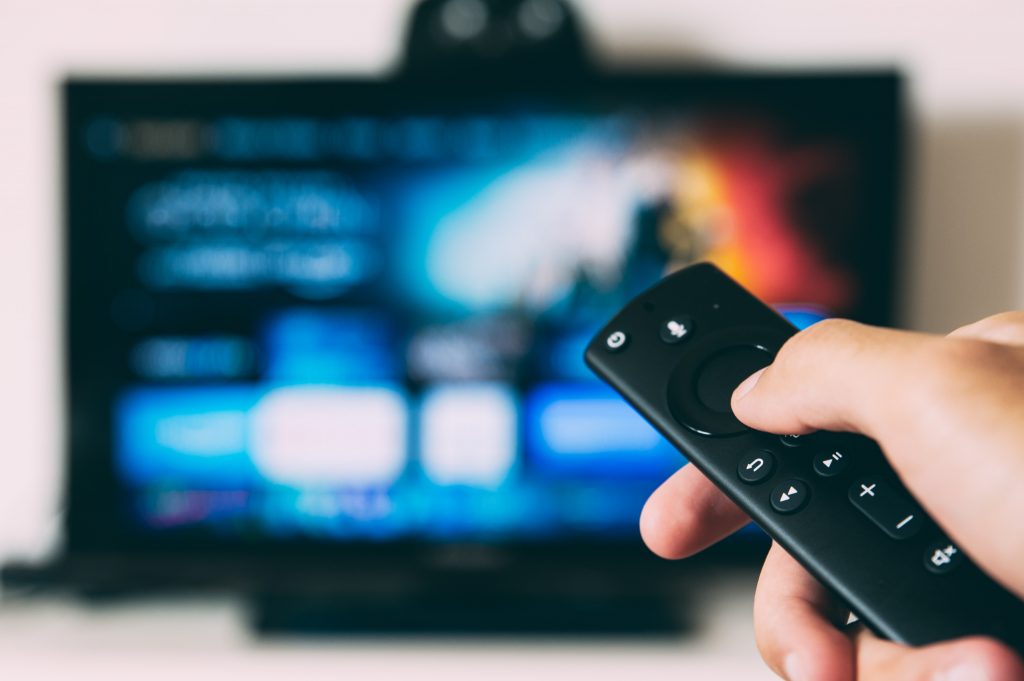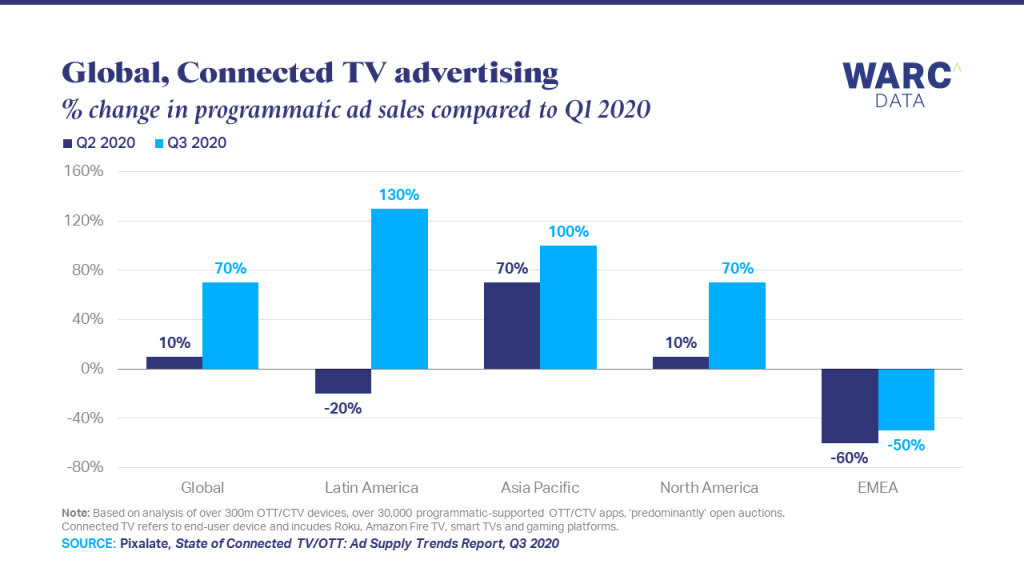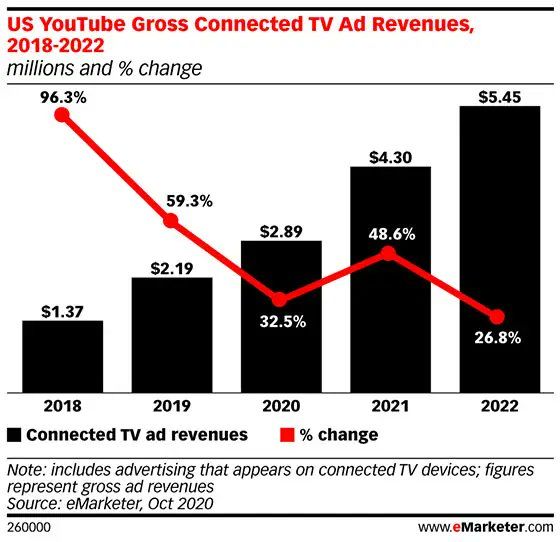In recent years, the growth of Connected TV is transforming the world of digital advertising.
The format of TV ads without the big price tag, the higher engagement viewers, and the health of the media mix are just some of the reasons to explain why advertising on Connected TV is growing rapidly.
In the case of the US, with more than 164 million users accessing video content through connected TVs -expected to grow to 204.1 million viewers by 2022- it’s no wonder marketers are looking for ways to leverage this touchpoint. In addition, the number of smart TVs and over-the-top devices (OTTs) in homes exceeded one billion in 2019. In the U.S. alone, more than 50% of the population has a TV connected at their home.

How does CTV advertising work?
Connected TV (CTV) allows advertisements to be placed on any TV that can connect to the Internet and access streaming video content beyond what is offered by a regular cable provider. CTV includes ads purchased on a schedule and displayed on other devices such as consoles, computer/mobile streaming, gaming devices, or smart TVs.
Advertising on CTV is a form of private marketplace (PMP). The programmatic media buying ecosystem works with multiple levels of auctioning, and each level of the “waterfall” has its own price and access parameters. Selling inventory in the private marketplace is only one auction level above the open exchange, but offers sellers the opportunity to access specific positions in an auction with lower bids, resulting in higher profit rates for the producer/content developer.
The Private Marketplace is invitation-only and contains a collection of high profile publishers. It usually also provides access to stock within specific sections, subsections or creative formats of the site that may not be purchased specifically in open auctions. Creative formats available in a private marketplace include display, video, audio, Native TV and connected TV.
Let’s review the acronyms you need to know in the CTV world:
CTV: Connected TV
OTT: Over the top
PMP: Private marketplace
CPCV: Cost-per completed view
VCR: Video completion rate

Connected TV KPIs
The metrics of connected TV advertising are very different from the metrics we track in display advertising.
To dig a little deeper, clicks only occur if someone is streaming content on a laptop. Therefore, CTR and post-click conversions should not be your primary metrics. Conversion tracking would be limited to display conversions, such as video completion rate and cost per view.
However, what can be tracked is the awareness, the video completion rate (VCR) and the cost per full view (CPCV).
Cost per completed view: The CPV or cost per completed view is calculated by dividing the total spend by the number of completed views. You can also expect very low cost per completed view targets for publishers with high CPM. This is an ideal goal if you are taking advantage of video, connected TV or audio ad formats.
Complete rate: Represents the percentage of impressions in the campaign that reached the completion of the ad. Completion rates for connected TV are extremely high, as the environment usually does not allow skipping videos. This is an ideal goal if you take advantage of video, connected TV or audio ad formats.
The Cost of Connected TV
When considering connected television over regular video advertising, one thing to keep in mind is that this premium advertising space often requires participants to pay a certain minimum price or a higher minimum CPM. Connected TV is sometimes 3-5 times more expensive than standard video placement, but CPCV is almost always cheaper than CPCV for video assets.
CTV ads only allow optimizations towards the best PMP deals within a group of ads.
For example, if a deal has a higher CPV (cost per full view) or a lower VCR (video completion rate), it is recommended to eliminate it. Usually not much optimization work is needed because the CPV and VCR tend not to vary in time of day, day of week, etc., so basically, negotiation is the only thing that would need to be optimized.
White lists and black lists are a good starting point for optimizations if you use connected TV PMP contract groups. This offers more granularity in optimizations to set bid parameters based on high and low performance positions.


